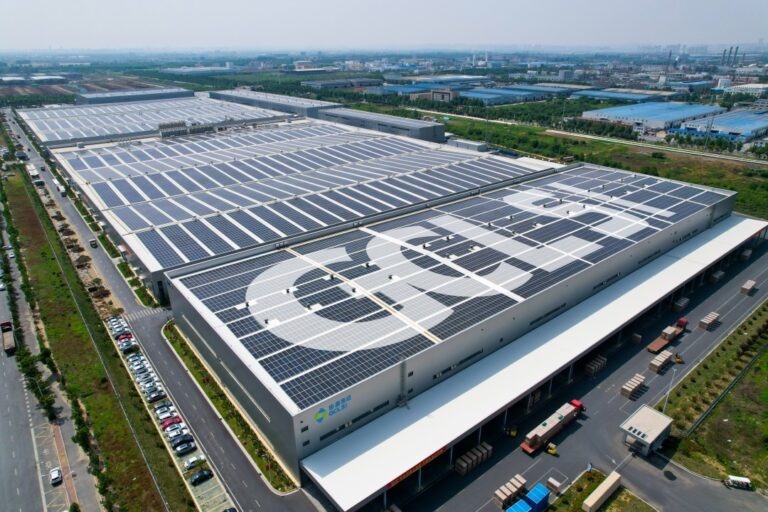Chinese module manufacturer GCL SI has expanded into the production of back contact (BC) solar cells with its first 660W BC module, featuring TOPCon (tunnel oxide passivated contact) technology.
Chinese module manufacturer GCL SI, a subsidiary of GCL Technology, has launched its first PV module based on BC solar cell technology.
The 660W module, with dimensions of 2,382 mm x 1,134 mm x 30 mm, has a temperature coefficient of -0.25% per degree Celsius.
Sheng This design reportedly improves light absorption, photoelectric conversion, recombination loss reduction, and current collection efficiency.
The module design enables longer transportation distances of minority carriers, which requires higher quality substrate material. GCL SI said it is leveraging its integrated supply chain and self-developed high-purity fluidized bed reactor (FBR) silicon to ensure superior material quality and longer carrier life.
GCL SI also uses multi-layer dielectric gradient film technology, which increases material ratio and reduces parasitic absorption losses compared to conventional cells. The high-capacity pyramid structure reduces light reflection to less than 0.8%, while a modified refractive index improves aesthetics and anti-PID (potentially induced degradation) performance. Lotus anti-dust technology focuses on distributed PV applications.
The p-n junction of the module features a composite tunneling-passivated contact for ultra-low contact resistance and improved passivation. A patented high efficiency passivation film enhances the insulation areas, achieving an open circuit voltage (Voc) of over 748 mV. Micron-scale pattern etching provides precise insulation, avoids short circuits and improves the accuracy and stability of laser processing.
GCL SI said advances in GPC and passivated contact technologies are six and three years in development, respectively. In December 2024, GPC2.0 cell efficiency reached 27.1%, with projections of 27.4% in the second quarter of 2025 and 28.2% by the end of 2026.
The module offers a system cost advantage of $0.095/W over conventional TOPCon, improving life-cycle levelized energy costs (LCOE), according to GCL SI.
Sheng said the future of distributed solar energy is becoming more diverse due to market demand.
“Customers are now seeking not only lower system costs, but also aesthetic appeal and increased capacity for their PV projects,” he said. “As the distributed market grows, GCL SI’s GPC 2.0 is poised to capture a significant share of the growing market.”
This content is copyrighted and may not be reused. If you would like to collaborate with us and reuse some of our content, please contact: editors@pv-magazine.com.


